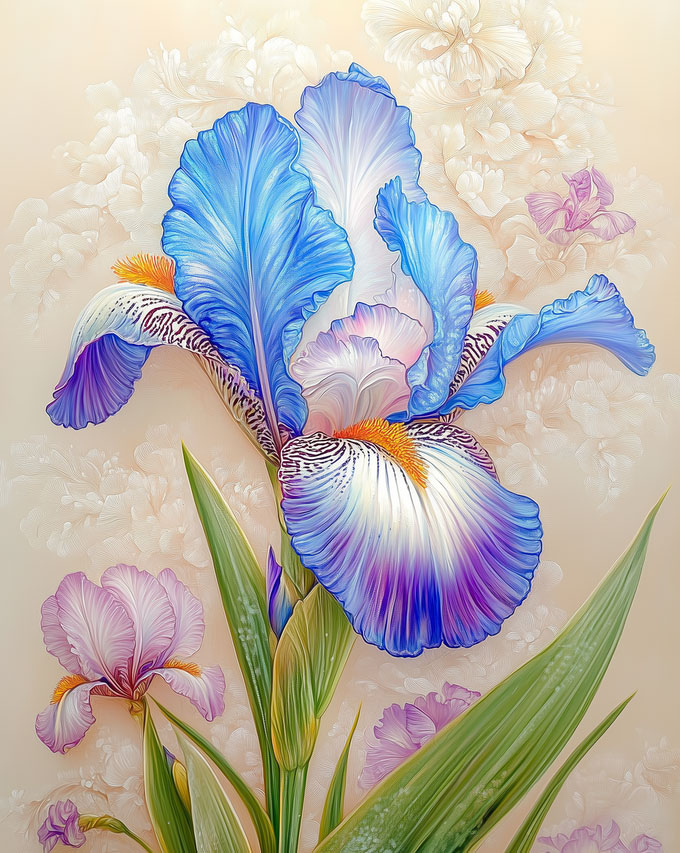Writing a Poem of Life at the End of the Rainbow
- 2025-06-12
- AI IMAGES
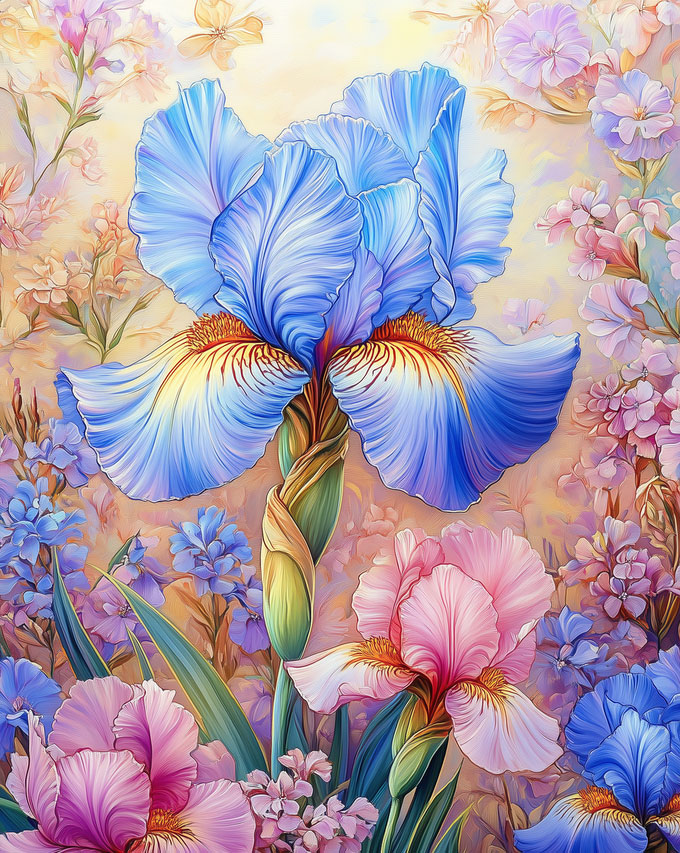
Iris is the messenger of the season, spreading the poetic lines of life at the junction of spring and summer. When the April wind still carries a sharp chill, the flat leaf iris and mallow iris of early spring quietly probe their heads, using a touch of light purple or dark blue brush to write the first line of spring footnotes on the gray brown soil. By May, most irises stretch their feather like petals, like butterflies flapping their wings, dyeing the garden a flowing blue purple ocean. The late blooming Japanese iris, on the other hand, continues this grand narrative in the early summer breeze, swaying in a cool posture until July, as if the lingering charm of spring cannot bear to end.
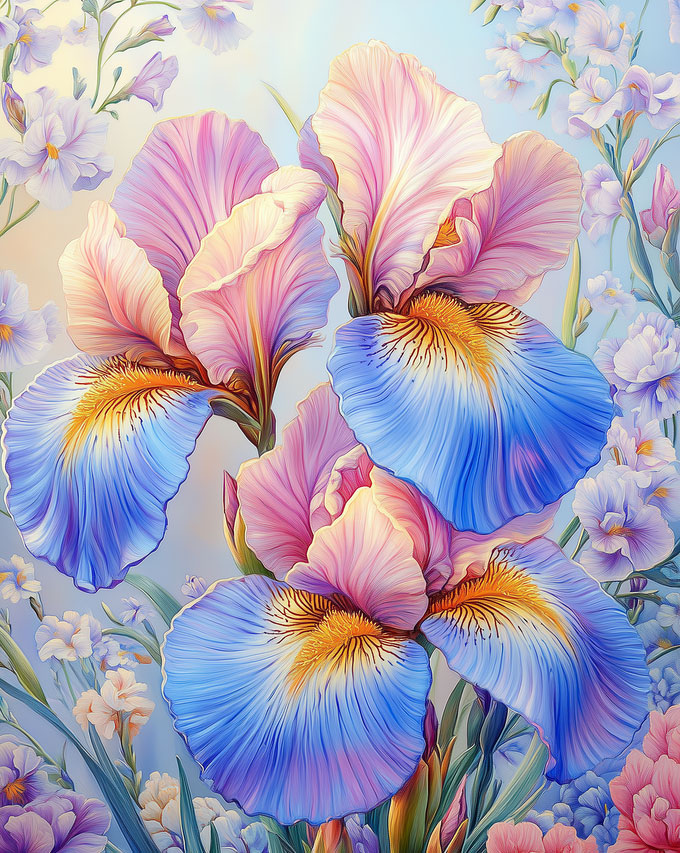
The blooming of iris is a dance with time. Their sensitivity to climate is almost like a poet's passion - subtle changes in temperature, humidity, and light can make the petals stretch or close into an impromptu poem. In the fields of southern France, irises may bloom as early as April; In the cold valleys of Northern Europe, they may patiently wait for the June sunshine. This uncertainty is like the rhythm of life: it follows the rules and is full of unexpected poetry.
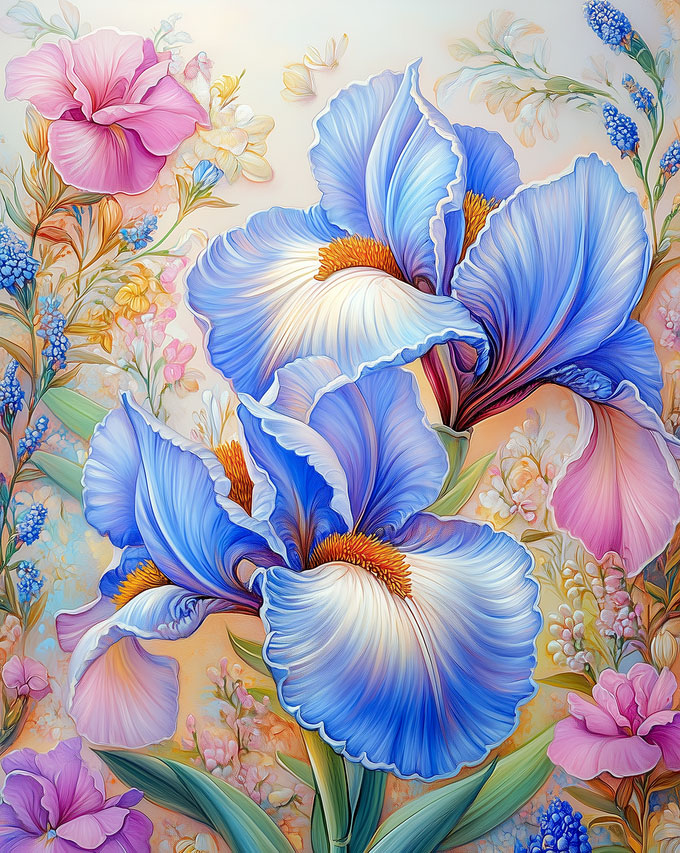
The scientific name "Iris" for iris comes from the Greek word for "rainbow" and is also the name of the goddess of rainbows in mythology. In Greek legend, Iris stepped on a colorful long bridge to connect heaven and earth, conveying oracles and love. Iris, like her incarnation, becomes a medium for dialogue between the human and divine realms with its colorful colors and elegant posture.
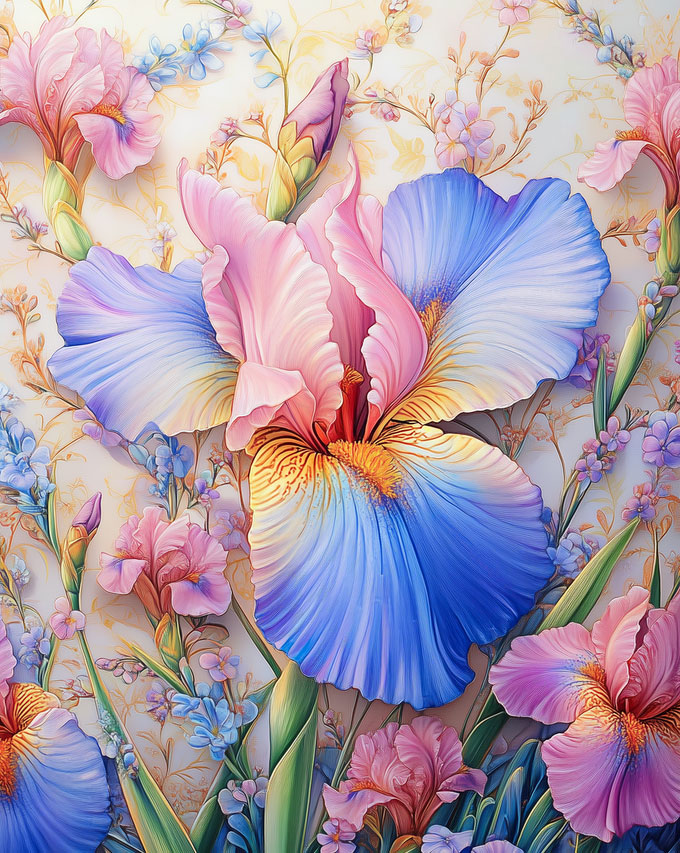
The ancient Egyptians regarded the iris as a symbol of strength and eloquence. The iris pattern engraved on the scepters of the pharaohs was a tribute to the eternal monarchy. The French royal family has designated it as the national flower. The three petals of the iris respectively represent faith, wisdom and chivalry, becoming a totem of freedom and light. In the East, the iris is endowed with a more gentle meaning: in Xi Murong's pen, the iris is a "deep purple mystery", while in Shu Ting's poetry, it "sings softly", transforming into a fairy tale that can sing.
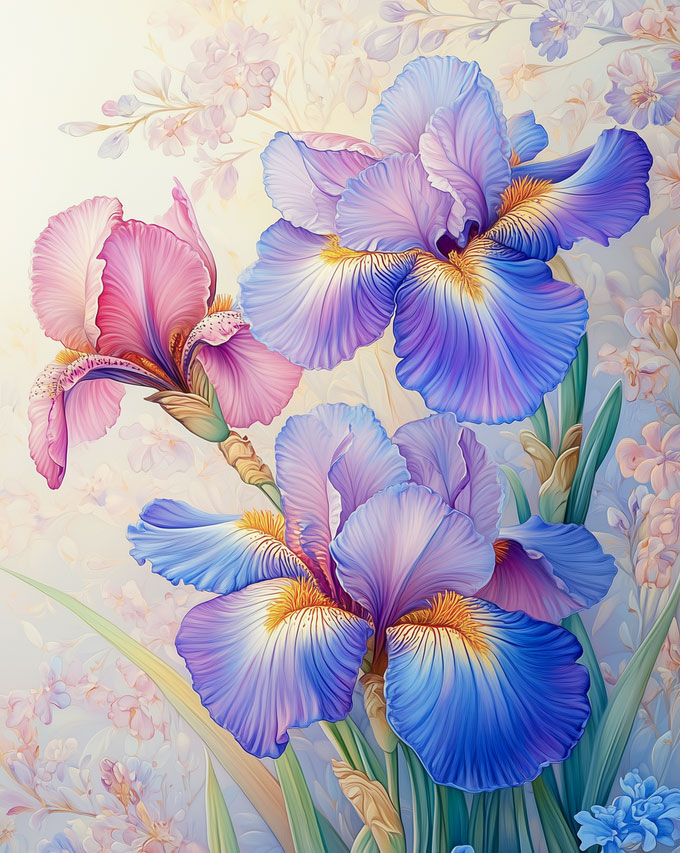
Monet interpreted the iris in another style. Along the path in Giverny Garden, clusters of irises spread out in the play of light and shadow. Their blue-purple petals flow like a starry river, leading the viewers into a quiet and mysterious world. In his paintings, irises are not only plants but also a metaphor for time: between the blooming and withering of flowers, eternity and the fleeting dissolve here.
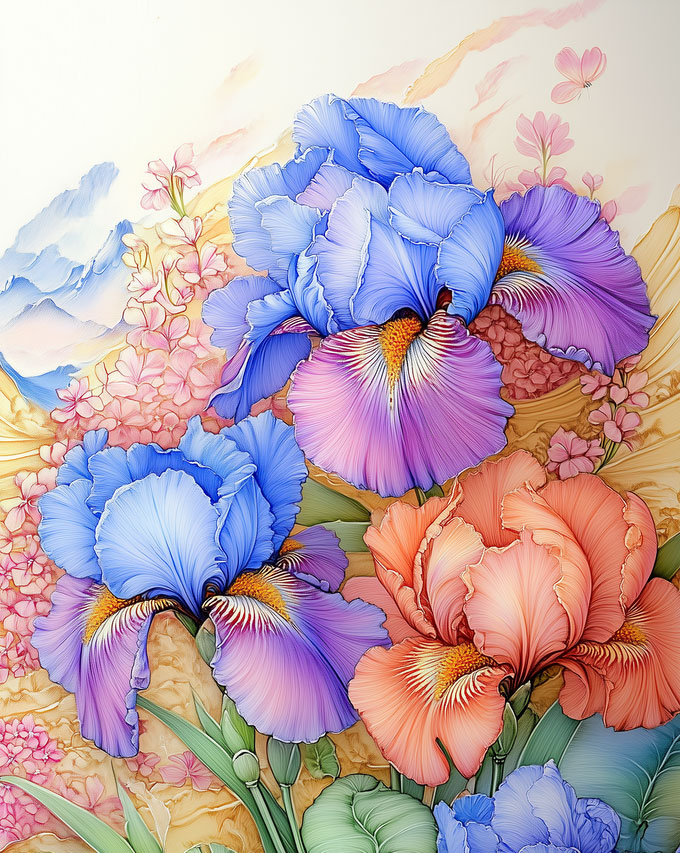
The romance of irises not only exists in legends and art, but also seeps into the texture of life. Its rhizome is slightly cold and toxic in nature, but it can promote blood circulation, remove blood stasis, detoxify and eliminate accumulation. In ancient times, villagers strung its roots into necklaces to ward off evil spirits with a refreshing fragrance. When children lose their teeth, the "teething sticks" made from iris roots not only relieve itching but also carry the wishes of the elders.
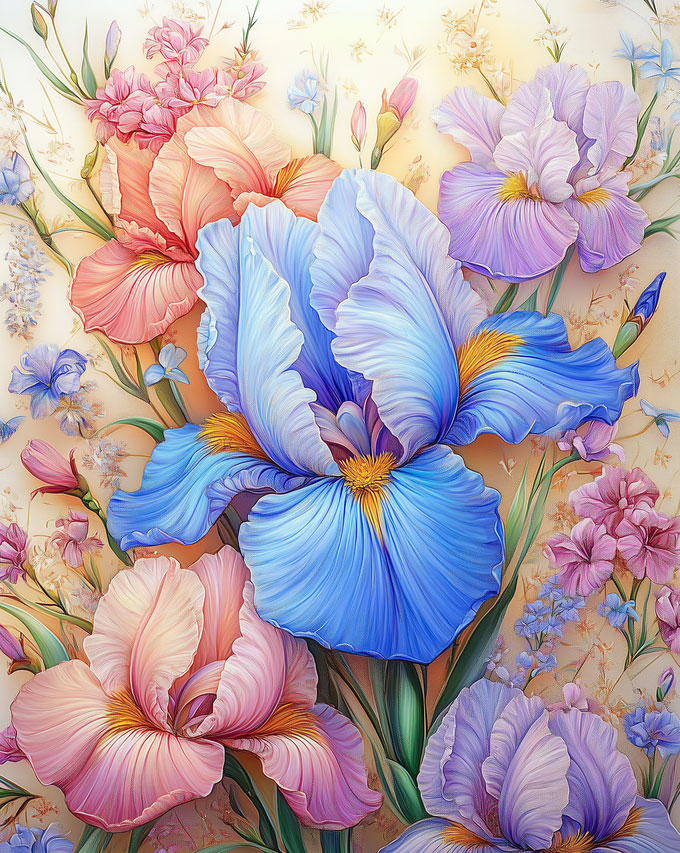
In the courtyards of modern people, irises are a soothing sight. The dewdrops in the early morning adorn the petals, and the fluttering of bees and butterflies is a silent dialogue. After the rain, the wet petals droop, yet stubbornly raise their heads when the sun reappears - this tenacity of life is just like a microcosm of our search for peace in the hustle and bustle of the world.
